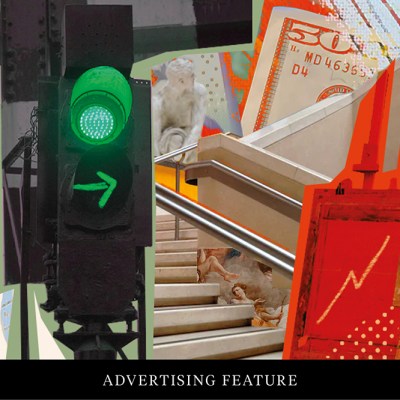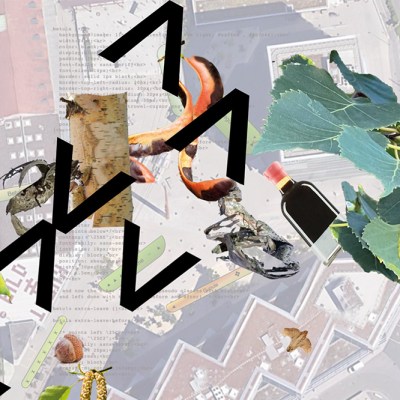From the September 2023 issue of Apollo. Preview and subscribe here.
Selling art remains, by and large, a traditional business. Larry Gagosian, as we have just learned from a recent profile in the New Yorker, models himself on the legendary British art dealer Joseph Duveen (1869–1939). Auction houses have not changed fundamentally since Sotheby’s was founded in London in 1744. That doesn’t stop people – usually from tech and finance – trying to find new ways of making money from art.
Twenty years ago it was art funds. Just before the pandemic it was blockchain, cryptocurrencies and non-fungible tokens that promised to revolutionise the art market. The latest innovation is ‘fractionalisation’, which is designed to allow investors to buy bits of multi-million-dollar paintings rather than shelling out – if they are rich enough – on the whole thing.
The latest entrant is Artex which, despite the name, is unconnected to the infamous British plastering product (dubious names abound in this field). It joins a slew of other new firms, including Mintus, Freeport, Ikon Exchange, Artsplit and Showpiece among others. The best known is US-based Masterworks, founded in 2017 by Scott Lynn, an advertising and fintech entrepreneur. In 2021 Masterworks secured $110m in a funding round led by venture capital firm Left Lane Capital that valued it at more than $1bn.
Strictly speaking, fractionalisation is not new. More than decade ago a company called SplitArt announced itself, but survived less than a year. Some say it was ahead of its time: the new firms are convinced that the fast-rising, tech-savvy younger generations are more comfortable than their elders with art as an investment. Some have accreditation from financial regulators such as the UK’s Financial Conduct Authority (FCA) and the Securities Exchange Commission (SEC) in the United States, believing this will lend greater confidence to their activities.
Like many start-ups, these companies are not averse to making big claims. Tamer Ozmen, a former senior executive at Microsoft who founded Mintus, told a gathering of entrepreneurs in St Moritz earlier this year that the amount of art in collections could be worth as much as $1.7tn, but currently only $65bn a year is traded at auctions and galleries. The implication was that Mintus, which Ozmen described as ‘disruptive’ and ‘democratising’, could unlock this financial potential.
Meanwhile, Yassir Benjelloun-Touimi, a former UBS investment banker and co-founder – along with Prince Wenceslas of Liechtenstein – of Artex, says his motivations are about more than making money. ‘I am an art lover and I love finance as well,’ he says. ‘I thought it would be wonderful if we could find a way to make these two things work together and let art be enjoyed by a lot more people.’ Artex, he adds, is about ‘democratising access to iconic art, opening it up to as many people as we can’. (‘Democratising art’ is a phrase used with monotonous regularity in this field. What increasing the number of people using art to turn a buck has to do with the rights and sovereignty of the population is never made clear.)
Artex describes itself as an exchange, so doesn’t sell art directly. It encourages the owners of high-value works of art to list them, like a publicly-owned company, and offer shares. Artex launched its first listed artwork last month: a triptych by Francis Bacon, Three Studies for a Portrait of George Dyer (1963). Its owner bought it for $51.8m from Christie’s in 2017 and will offer it on Artex valued at $55m, broken into 550,000 shares with an initial issue price of $100. Artex charges three per cent to list each work of art, which on works of art valued at $50m amounts to $1.5m. It will charge a further 0.25 per cent per trade.
Three Studies for Portrait of George Dyer (1963), Francis Bacon. Photo: Prudence Cuming Associates Ltd; © The Estate of Francis Bacon. All rights reserved, DACS/Artimage 2023

Benjelloun-Touimi says Artex will list three works this year, rising to one a week by 2025. Each work must be valued at $50m or more ‘so we are bringing the safest investment,’ he says. Art worth this much is thin on the ground – according to Sotheby’s, in 2022 only 24 works sold for $50m or above at auction – so securing the art will be one of Artex’s challenges.
The next is liquidity. Because the works are not intended to be sold, the daily share price will be set simply by supply and demand – a process Benjelloun-Touimi describes as ‘the same logic as [trading in] gold’. This means Artex must actively market the shares or buyers may find they have no one to resell to. Plans for exposure include lending the works to museums for exhibitions and long-term display. Leading institutions are already on board, he claims, including the National Gallery in London, the Van Gogh Museum in Amsterdam and the Musée d’Orsay in Paris. This may surprise some in the museum world, where it is considered ethically doubtful to display works on loan that are overtly for sale.
The shares will keep trading in perpetuity unless a single buyer makes what Benjelloun-Touimi calls ‘a takeover bid’. That means buying all the shares and paying a 20 per cent premium, 85 per cent of which goes to shareholders and 15 per cent to Artex.
Mintus, meanwhile, launched in May last year. It uses blockchain technology for its trading platform, which explains why it is described at Companies House in the UK as an information technology services business – it is also exploring fractionalising bloodstock and property. Earlier this year Ozmen told the gathering in St Moritz that investors have included Tad Smith, former chief executive of Sotheby’s, and Brett Gorvy, co-founder of the LGDR super-gallery/advisory (Gorvy is also a member of Mintus’s advisory board) as well as ‘two of the world’s largest collectors’, although to whom he was referring was unclear.
Mintus’s business model – which is broadly similar to that of Masterworks – is to secure multi-million-dollar paintings and sell shares in them. Its first was a Self-Portrait (1966) by Andy Warhol and a painting by George Condo, The Outcast (2018), both consigned by private collectors. Shares in the Warhol, priced at $5m, have sold out, with 110 investors spending between $3,000 and $150,000. Over the next year Mintus is planning to offer a further $50m of art.
Self-Portrait (1966), Andy Warhol. © 2023 The Andy Warhol Foundation for the Visual Arts, Inc. Licensed by DACS, London

Mintus makes money by charging the investors fees. It marks up the original consignment price by 14 per cent to cover ‘investment management, insurance, maintenance and storage’. This is based on two per cent a year for the seven-year investment term (if the work is sold earlier, the fees are returned proportionately). When the work is sold, Mintus takes 20 per cent of the profits as a performance fee, a further one per cent as an exit fee and distributes the rest to shareholders. Its website says it is ‘fully transparent about how we charge’ although it appears only to be possible to get detailed information on valuations and charges following an ‘onboarding call’ with a member of Mintus’s team. (Similarly, Masterworks charges a 10 per cent mark-up, plus a 1.5 per cent annual management fee and 20 per cent of the profit.)
Investors hold the shares until Mintus judges the time is right to make a sale. Mintus has set up a secondary online bulletin board offering investors an opportunity to exit early – as long as there is a buyer for their shares. Across the top of its website is an FCA-required warning: ‘This is a high-risk investment. You could lose all the money you invest and are unlikely to be protected if something goes wrong.’ A further warning inside adds: ‘Even if the business you invest in is successful, it may take several years to get your money back. You are unlikely to be able to sell your investment early.’
Unsurprisingly, reactions in the art market to these innovations are mixed, even as some of the entrants are becoming major buyers. Masterworks, for example, says it has bought art worth $1bn over the past four years from auction houses, dealers and collectors.
Melanie Gerlis, author of Art as an Investment? A Survey of Comparable Assets (2014), says that art has been considered an asset class since the deregulation of the US and UK stock markets in the 1980s. ‘But that doesn’t mean it is a good investment. It is not a get-rich-quick market. A lot of people think they can make money fast on an asset that is hard to monetise.’
The reasons for this are complicated. The art world is small and buyers at the high end, compared with, say, the property market, are few. Meanwhile, artists go in and out of fashion (think East Village Neo-Expressionists, several YBAs of the 1990s and the so-called Zombie Formalists of the 2010s).
Artists also make work of varying quality. Jean-Michel Basquiat, a darling of the art market, made wildly inconsistent work before he died in 1988. Even paintings in the same series vary in quality, as could be seen in the Fondation Beyeler’s recent exhibition ‘Basquiat: The Modena Paintings’, which featured eight works made in 1982.
‘With art you are always comparing apples and oranges, which isn’t the case with stocks,’ says the third-generation art dealer Omer Tiroche. His gallery focuses on the high-end secondary market with, he says, an average transaction value of around $1m. ‘Most of my collectors buy art for emotional reasons – I don’t have many who say: “Great, this will look lovely in storage.” But this doesn’t mean art isn’t an investment,’ he says. He believes that a generational shift is under way. ‘People of my age are more clued-in to the idea of diversifying their portfolios, of which art can be a part.’
Others disagree. ‘The pleasure of art is supporting artists and being part of the art world,’ says Alain Servais, an art collector and investment banker based in Brussels. ‘I would say I’m well placed to say if art can be an asset, and I say without any doubt – no.’ The single biggest reason, he says, is the high fees levied when buying and selling art.
Sotheby’s, for example, charges sellers 10 per cent of the hammer price then adds a 26 per cent buyer’s premium on works up to $1m, plus a one per cent overhead fee. Fees charged by galleries and other intermediaries who resell art privately can be even higher.
According to Servais, these are vastly greater than the fees charged in the stock or property markets. ‘If I buy stocks in a retail company, they may only need to rise by 0.1 per cent for me to recover my money if I sell,’ he says. ‘An apartment in London might need to increase by 10 per cent to cover my costs. Art might need to rise in value by 30 per cent or more just for me to break even.’
To counter this, Artex, Mintus and Masterworks all claim that art has historically outperformed the S&P 500, though each uses different methodologies and datasets, so the figures are inconsistent.
Sea Monster (2014), Mark Bradford. Courtesy Masterworks

Artex’s press materials claim an 8.4 per cent compound annual growth rate for fine art from 1999 to 2019. Mintus’s website claims ‘blue-chip art’ has averaged ‘8.9% growth since 2000’. Masterworks’ reads: ‘Between 1995 and 2022, contemporary art specifically has appreciated at a compound annual growth rate of 12.6%.’ Weeks could be devoted to unpicking this kind of data, and indeed some academic research departments – mostly inconclusively – have. Given the many variables that affect the art market, few in the traditional trade put much store on these kinds of figures.
So far, Masterworks is the main player to have put its claims to the test. It says it has sold 16 works, all at a profit. Recent research published by analysts ArtTactic looked at sales of 14 of these works, by Banksy, Cecily Brown, Pierre Soulages and others, using SEC filings. Returns net of fees varied from three per cent for Flowers (1964–65) by Andy Warhol to 86 per cent for Tracing (1971) by Sam Gilliam, after a period of 14 months to two years, respectively. ArtTactic’s research also suggests that, across the 14, a total gross profit of just under $14m (the difference between the acquisition prices of the works and their eventual sales) translated to an estimated net profit to shareholders of $8.6m (the difference between the amount the investors paid for their shares and the distribution to shareholders after the sale). This was after transaction costs, fees, profit sharing interest and other business costs.
But art is a long-term investment and most of the art in these schemes will not be sold so soon. It could be a decade or more before we know if the new fractional companies will share the same fate as SplitArt or – a bit like Artex’s namesake decorative plaster – become a permanent fixture.
From the September 2023 issue of Apollo. Preview and subscribe here.



